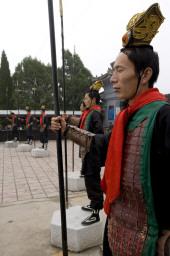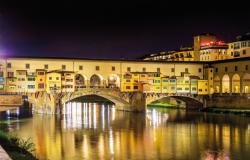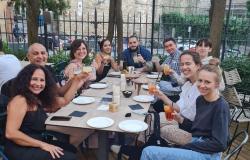An array of exquisite statues and artefacts never seen before outside China went on show here on Friday for an exhibition spotlighting the artistic flowering that accompanied the Chinese cultural renaissance in the first millennium.
More than 200 works are on display in Florence, highlighting the extravagance, luxury and sophistication of the imperial Chinese courts during a period in Europe that saw the fall of the Roman Empire and the Dark Ages.
The exhibition at Palazzo Strozzi charts a course from the tradition-steeped works of the middle years of the Han Dynasty (206 BC-220 AD) through China's increasingly cosmopolitan culture up to the refined elegance of the Tang Dynasty (618-907 AD).
''The nine centuries represented in the show are a period of strong renewal in Chinese civilisation,'' said curator Sabina Rastelli.
''The great attraction for all things foreign put China at the centre of commercial and cultural exchanges with input from different religions and races that made this period unique,'' she added.
Visitors to the show will be greeted by a 2.5m statue of Maitreya, the Buddha of the future, in the courtyard of the Florentine palazzo - commissioned by the only female emperor of feudal China, Wu Zetian (625-705). Next in the exhibition are works from the Han Dynasty, including the stone statue of a bearded lion-like creature - the celestial animal that protected the eternal sleep of a noble found in a grave at Luoyang in Henan province in western China.
But the highlight of this section is a spectacular procession of bronze chariots and fat-hooved horses discovered in a tomb in Wuwei in the province of Gansu in north-western China, representing the cavalcade of a regional governor who died at the end of the Han period.
The next section of the show is dedicated to Buddhist art, with 27 impressive sculptures dated to between the fifth and ninth centuries such as a gilded bronze eleven-headed statue of Guanyin, the goddess of mercy, from the Shuiyue temple at Tianshui in Gansu province.
An array of gold and silver works and teracotta sculptures found in graves during the period of the Tang Dynasty follow, many of which are marked by the period's receptiveness to foreign influences.
At the height of the dynasty in the eighth century, the capital Chang'an in the central Shaanxi province was the world's largest city and a buzzing trade centre with an estimated population of two million.
Among the most precious artefacts on display is a set of five painted earthenware tomb figures from 730, each of which has a different foreign face.
The show ends with recently discovered frescoes and paintings including a mural depicting a fiery central Asian horse found in the tomb of Wei, one of the wives of the Emperor Taizong (599-649).
Other frescoes show the stunning beauty of the ladies of the Tang court from their pearl-shaped faces down to the detail of their daring court attire and elaborate hair-dos.
'China, At The Court Of The Emperors, Never-Before-Seen Masterpieces From Han Tradition To Tang Elegance (25-907 AD)' runs until June 8.









